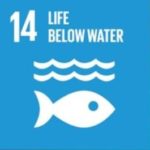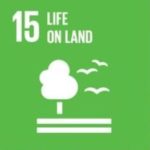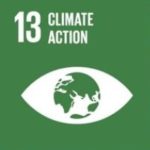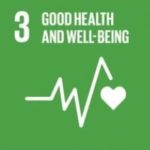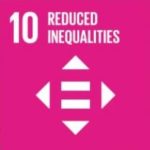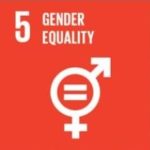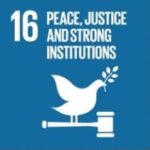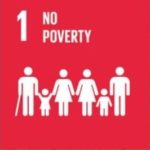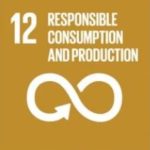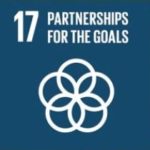Investigating the link between human development and the state of the planet – a comparison of the GAPFRAME and the United Nations Human Development Index
The United Nations Human Development Index (HDI) has been assessing human development for the past 37 years. It emphasises that the people and their capabilities should be the ultimate criteria for mapping a countries development, not just economic growth. The HDI is a summary measure of average achievements in key dimensions of human development such as standard of living, life expectancy, health and access to knowledge.
The www.gapframe.org (GF) introduces a target ‘safe space’ where we can all live well within the limits of the planet and maps the current state of the world against this target. Similar to the HDI, the GAPFRAME provides a view of the world, which is based on more than economic results. The GAPFRAME’s measures each country on 24 issues, spanning the dimensions of Planet, Society, Economy and Governance. A country’s GF Score is based on results of its worst performing dimension, highlighting the priority area and related issues.
Comparing both indexes allows us to discover if there is a connection between Human Development and the multi-faceted journey to a safe space for all.
Comparison of the HDI and GAPFRAME Data (Fig 1)
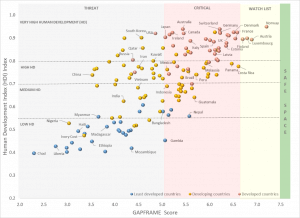
The HDI categorizes by very high, high, medium and low human development. The GAPFRAME classifies countries in to TOWARDS IDEAL, SAFE SPACE, WATCHLIST, CRITICAL and THREAT.
For countries placed in the high human development category, 47% have a GAPFRAME score in THREAT and 53% in CRITICAL. Even among nations scoring very high human development, only 9% have reached WATCHLIST, with 72% in CRITICAL and 19% remaining in THREAT. It is clear that high human development alone will not be enough to get the world to a safe space.
The majority of countries with very high HDI are in the GF CRITICAL or THREAT state today!
When we look closer at the HDI levels from a GAPFRAME perspective, there are some interesting revelations. As human development increases, the world makes progress towards safe space.
% of GAPFRAME Categories per HDI Level (Fig 2).

Looking at the GF scores for each human development level, we notice a shift from GF THREAT to GF CRITICAL as we move from low to very high human development (Figure 2). While almost 100% of low HD countries are in GF THREAT, medium and high HD nations demonstrate 50-50 split between CRITICAL and THREAT. Countries in the final human development category, very high, have managed a further shift, with 9% of countries in WATCHLIST, 72% in CRITICAL and a worrying 19% still in THREAT.
We want to explore why human development is only part of the answer to getting all of us to a safe space. For this, we evaluate which of the GF dimensions are dominant across the four HDI levels.
% of GF Priority Dimensions per HDI Level (Fig 3).
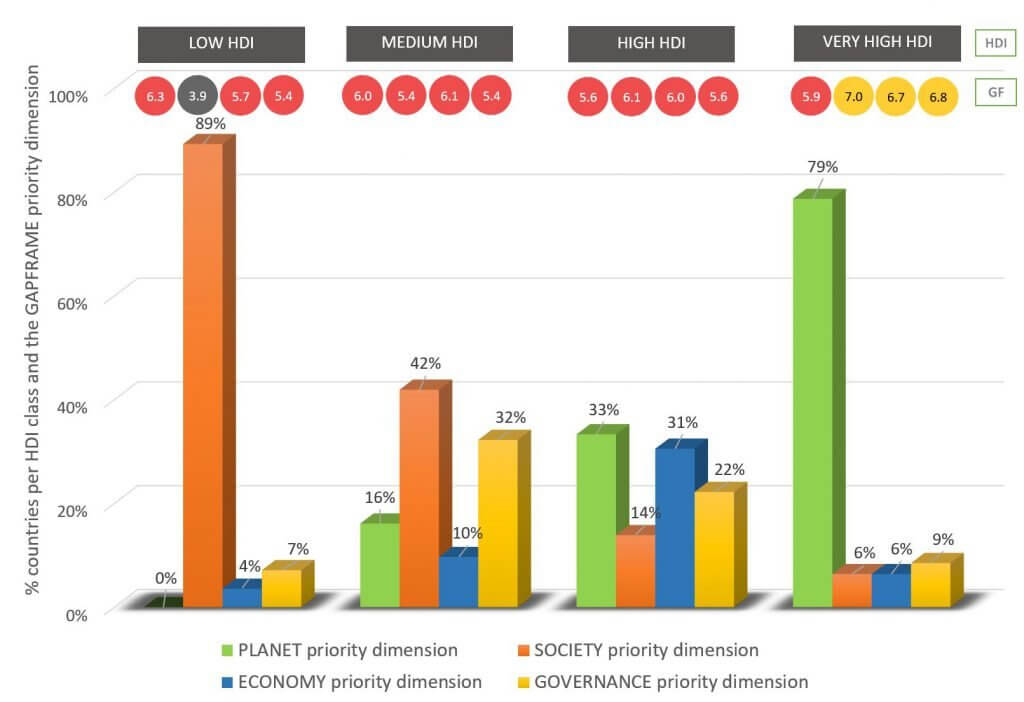
Comparing the priority dimensions facing countries as they mature in human development (Fig 3) is revealing. Among low human development countries, 89% have societal issues as their key priority. As we move to medium HDI, we see that societal problems are less of a priority (42%) while governance (32%), economy (10%) and planet (16%) shift. In high HDI, we see a further reduction of priority dimensions in society (14%) and governance (22%), while priorities in planet (33%) and economy (31%) increase. By the time, we reach very high human development there is a dramatic change in priority issues. 79% have their priority dimension in Planet. As countries grow in human development, they demonstrate an ability to tackle priority issues. As people and countries develop, they do so at the expense of the planet (environment) and suddenly the development becomes a cause for the deteriorating state of the environment (GF Planet dimension).
Looking at the average score for each GF dimension as per HDI level, we are hoping to find further answers.
Average score of GF Dimensions per HDI (Fig 4).
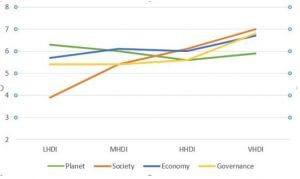

The results are clear: the GF Planet dimension is the only dimension to decrease in value across the human development categories; low HDI – average GF score 6.3 to high HDI – average GF score 5.6. We do see a slight improvement to 5.9 among the very high HDI countries. Society displays a massive improvement across the HDI categories, going from low HDI – average GF score 3.9 to very high HDI – average GF score 7.0. This is an impressive shift from GF THREAT to GF WATCHLIST. The average score of the Economy and Governance dimensions remain stable from low HDI to high HDI, finally shifting to WATCHLIST in the very high human development category.
Governance: low HDI – average GF score: 5.4, medium HDI – average GF score 5.4, high HDI – average GF score 5.6, very high HDI 6.8. Economy: low HDI – average GF score 5.7, medium HDI – average GF score 6.1, high HDI -6.0, very high HDI – average GF score 6.8.
In short, these results confirm our previous conclusions: as people and society evolves, the environment deteriorates
When we compare the evolution of the % of priority dimensions (Fig 5), and the average score of GF dimension (Fig 6), across the HDI categories there is an interesting finding. Both graphs display a similar point where we have reasonably balanced results. This point, on the cusp of medium and high human development demonstrates that, on average, countries are solving their priority issues and achieving almost balanced results in dimension scores. As we know from our comparison of the GAPFRAME with the SDG’s, countries with the ability to balance priorities are stronger GAPFRAME performers. By focusing equally on solving issues in each dimension, nations at medium and high human development are already in an excellent position to improve their GAPFRAME score, if they can continue on a balanced progression and carefully monitor their negative impact on the environment.
% of GF Priority Dimensions per HDI (Fig 5). Average score of GF Dimensions per HDI (Fig 6).


Nations on the cusp of medium to high human development may be better positioned to progress towards a safe space than very highly developed countries.
In conclusion, when comparing the GAPFRAME with the Human Development Index we see that:
- Human development alone will not be enough to get the world to a safe space. The majority of countries placed in very high HDI are in the GF CRITICAL or THREAT state today – very far from the safe space
- As human development increases, the world makes slow progress towards safe space and demonstrates the ability to tackle its priority issue
- As people and countries develop, they do so at the expense of the planet (environment) and suddenly the development becomes a cause for a deteriorating state of the environment (GF Planet dimension)
- Nations on the cusp of medium to high human development are better positioned to progress towards a safe space than very highly developed countries
Feel free to share your thoughts on this article at the GAPFRAME community.
